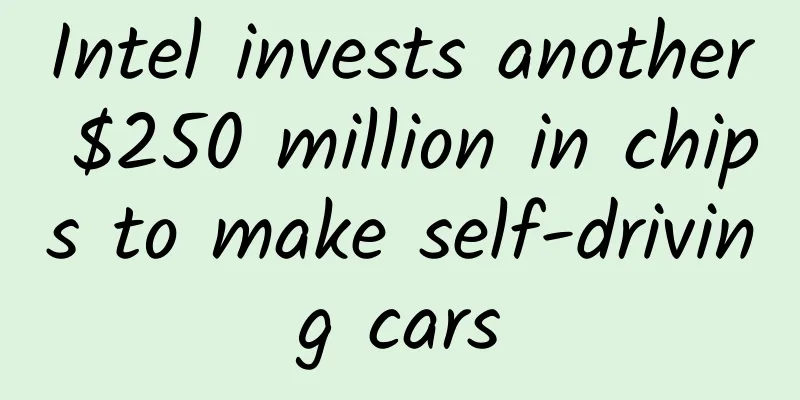To brush or not to brush is not just a matter of "face"

|
"This was installed for us for free by Alipay, but most customers still prefer to scan the QR code. You are the first one to use facial recognition today." The owner of a community convenience store told Dongdong Notes when talking about the Alipay cash register on his counter. We are no strangers to mobile payment, and "face recognition" is also widely used in many application scenarios. As for face recognition + payment, it is also a landing scenario that has gradually emerged in the third-party payment market this year. It is worth noting that after the full implementation of many large supermarkets, restaurants, hotels and other consumer places, more and more community supermarkets, tobacco shops, roadside stalls... seem to have become the focus of competition among mobile payment giants. So here comes the question: when you are in a small store and face payment is available, which claims that you don’t need to use your phone anymore, should you pay with your face or not? Offline stores start using facial recognition payment A few days ago, a friend told me a story during a chat. After he bought a drink at a roadside store, the owner enthusiastically recommended that he use facial recognition payment. "It was just a matter of a few dollars, but the other party was very enthusiastic about asking me to pay with facial recognition, saying that I could get a red envelope as long as I scanned my face." The friend was very curious, "Can such a small store also use facial recognition?" So he stood in front of a cash register equipped with a PAD display, stretched out his face, took a photo, and his face was instantly recognized and his Alipay account was reported. After confirmation, the payment was successful. However, the shop owner's words afterwards made my friend feel surprised, "You don't need to bring your phone to buy things in the future, just scan your face in the store." When my friend heard this, he became worried: In other words, his facial information has been recognized and stored by the system. Will there be a risk of leakage? He was not asked to blink or shake his head when facing the camera just now. If someone uses his photo to face the PAD, will he be able to pay successfully? If the store owner has a camera to take pictures of all paying users' faces, will there be a risk of... With a series of question marks, the friend raised his doubts to the boss, but the other party could not answer any of the questions. In Dongdong Notes' view, these professional issues are obviously embarrassing for the boss. However, for ordinary users, although face-scanning payment can save the step of taking out the mobile phone to scan the code and can pay directly, it is inevitable that everyone will have concerns and worries when facing personal privacy and security issues. Currently, face-scanning payment is being promoted in many supermarkets and small shops. Once you have scanned your face once, you no longer need a mobile phone, which simplifies the payment process. However, in reality, after nearly a year of vigorous promotion, users' acceptance of face-scanning payment still seems to be low. To this end, Dongdong Notes visited some offline stores in Beijing, including large supermarkets, chain stores, small community convenience stores, and fruit and tobacco shops. The cashiers all said that users do not use facial recognition payment very often, and the vast majority of people still prefer to use mobile phone scanning. A cashier at a brand chain bakery told Dongdong Notes: "Few people use facial recognition, not even one in 10 people. Customers are still used to scanning codes. We often remind customers that facial recognition can get discounts and red envelopes, but most people still insist on scanning codes to pay." In order to understand the user experience and feelings, Dongdong Notes randomly interviewed several consumers who were shopping. A young office worker said that he was not used to face-scanning payment: "I used face-scanning payment before on the recommendation of the store clerk, but the angle of the machine was not very good, and I had to bend down to aim at my face. I felt that the posture was very strange, especially when there were many people waiting to check out behind the checkout counter. It was very embarrassing." He emphasized that the recognition speed when scanning the face was average, not as fast as scanning the code, "The key is that the discounts (red envelopes) of a few cents are not meaningful." In addition to the user experience, the technical security and privacy issues related to facial recognition are also the topics that users are most concerned about. After all, not long ago, there was an incident in which several students could unlock SF Express Fengchao by showing their photos. In this regard, many users also expressed concerns about the security and privacy behind face-scanning payment. Regarding the security and privacy of payment devices, Dongdong Notes specifically consulted Ant Financial, which gave the following explanation: "Alipay's face recognition technology uses a dynamic live body collection and comparison method, which is absolutely impossible to crack with photos. It can even recognize the facial information of twins." Perhaps, giants like Alibaba and Tencent have the confidence and ability to protect the personal information security and privacy of users. However, at this stage, both the user experience and concerns about security and privacy are key factors hindering the promotion of facial recognition payment. What is intriguing is that the "subsidy" tactic that Internet giants have repeatedly used to promote their products has proven to be effective in promoting facial recognition payment to penetrate offline markets. Companies give generous subsidies, but users are reluctant to try them out As early as December last year, Alipay officially launched the offline face-scanning payment product "Dragonfly". Its appearance is to allow users who are accustomed to scanning QR codes to say goodbye to their mobile phones and complete payments directly with their faces. As Alipay's biggest competitor, WeChat also launched the face-scanning payment device "Frog" three months after the birth of "Dragonfly". Subsequently, the two successively launched the updated versions of "Dragonfly Plus" and "Frog Pro". Dragonflies and frogs are both beneficial insects, but their names seem to conflict with each other... When Internet giants set their sights on the same track again, competition will naturally intensify further, just like the mobile payment subsidy war that was wildly promoted in the past. At least from the current situation, many first-, second- and third-tier cities' large supermarkets, subway station vending machines, convenience store chains and even mom-and-pop stores have already installed facial recognition payment devices. The speed of this deployment is undoubtedly due to the high subsidies from Alibaba and Tencent. In April this year, Alipay said it would invest 3 billion yuan in subsidies for facial recognition payment in the next three years. However, the 3 billion yuan subsidy only lasted for five months. Of course, after 5 months, it is not that Alipay will stop subsidizing, but that it will subsidize more. In early September, Alipay announced the cancellation of the 3 billion yuan market subsidy plan and changed it to "unlimited subsidies". WeChat also announced that before March 31, 2020, it will provide a high subsidy of up to 1,540 yuan per device for the facial recognition payment device "Frog". In addition, there are reports that the total amount of subsidies from WeChat is about 10 billion yuan. The effectiveness of these subsidies is directly reflected in the popularization of hardware equipment installation and use, as well as the enthusiastic recommendations from countless shop owners and cashiers. Take Alibaba's "Dragonfly" as an example. Those face-scanning payment devices that are expensive in official sales channels are basically given away for free to offline merchants under Dali's promotion methods. According to a store owner of a community supermarket who revealed to Dongdong Notes, there is a cooperative relationship between merchants and payment companies. After merchants recommend and encourage users to pay by face-scanning to a certain amount, they can also receive additional subsidies. Of course, for ordinary users, the subsidies are red envelopes and certain discounts. When Dongdong Notes tested shopping in multiple stores, it was found that using face-scanning payment can enjoy certain discounts (or red envelopes). According to information provided by Alipay to Dongdong Notes, the cost of a facial recognition payment device is at least RMB 2,000. Compared with the hardware cost of the device, the technology and supporting system it carries are perhaps the most valuable and the most expensive part. In addition to subsidies to promote "face recognition", market cultivation is more critical Subsidy is the simplest, crudest and most effective way to promote new products. In the third-party payment market, giants such as Alibaba and Tencent have spared no effort to subsidize new payment methods. If we take the launch of the first QR code payment technology in China by Alipay in 2010 as the starting point, mobile payment has gone through nearly 10 years. During this period, the domestic mobile payment market has shown explosive growth due to the strong promotion of smart phones, mobile Internet and the two giants AT. According to data from iMedia Research, the scale of my country's mobile payment market has maintained a high growth rate in the past few years: by the end of 2018, the scale of China's mobile payment transactions reached 27.74 trillion yuan, an increase of 136.7% over 2017; in terms of users, the scale of China's mobile payment users in 2018 increased by 17.2% over 2017, reaching 659 million. With the continuous development of new technologies such as 5G and AI, payment giants are paying more and more attention to the use scenarios of facial recognition. According to a report from the Forward-looking Industry Research Institute, the facial recognition market is expected to maintain an average annual growth rate of 25% in the next five years, and the market size will reach about 6.7 billion yuan in 2022. Under this trend, face-scanning payment has obviously become the focus of competition among all parties in the future. A person related to Alipay revealed to Dongdong Notes: "Because face-scanning is an important application scenario for payment, and we believe that face-scanning will definitely become the most mainstream payment method in the future, we have been fully committed to developing face-scanning payment, hoping to occupy the market first." As for the reasons why Alibaba and Tencent are focusing on facial recognition payment, an Internet industry analyst told Dongdong Notes: "Giant companies like Alibaba and Tencent must be at the forefront of the market. They are the leaders in leading and changing the technology industry, so they are always the most sensitive to new things and technologies. At present, the domestic mobile payment market is almost dominated by Alibaba and Tencent. They will inevitably promote the application of new technologies in this area as much as possible to help themselves gain a larger market share." In addition, the person added: "From the perspective of the payment process, face-scanning payment can indeed free users from the constraints of mobile phones, making it more convenient and simple. However, in the early stages of the technology's implementation, the user experience may not be so perfect, so users may not achieve the desired effect when using it. However, these problems can be optimized in the future." Regarding information security and privacy issues that users are more concerned about, the person emphasized: "Users' concerns are reasonable and normal. Because even industry giants like Alibaba and Tencent cannot guarantee that their data is 100% safe. In overseas markets, even giants like Facebook have also had user data leaks, right?" In his opinion, at present, Alibaba and Tencent are the top players in China in terms of technology and security. "Therefore, these two companies should do more publicity while promoting their products to increase users' confidence in them, so that more users will be willing to try (face recognition)." 【Conclusion】 Whether you scan or not, your face is yours, and the application scenarios belong to the giants. In the future, the two payment methods of scanning and face scanning should coexist for a long time, giving users more choices. However, when it comes to the topic of "face" payment, it is still necessary to emphasize that users' vigilance and concerns will never disappear. This concern is by no means to make consumers feel at ease by emphasizing that "you can kill your phone" during the payment process. Therefore, in the past, when promoting QR code payment, subsidies may be the simplest way, but for face recognition, perhaps the more important thing is how to make users feel at ease pointing their phones at the camera. |
<<: Ten thousand words long article! A very comprehensive guide to B-side product design
>>: Why do these European and American countries restrict the use of facial recognition technology?
Recommend
How much does Baidu Aicaigou promotion cost? How much does Baidu Aicaigou membership cost per year?
I believe that many business owners are currently...
These factors may cause "precocious puberty"! When children have these symptoms, parents should pay attention
Expert of this article: Li Congzhe, Associate Chi...
Parent-child experience activity planning (commercial operation case)
The author of this article shares an activity pla...
Did you skip brushing your teeth during the Spring Festival holiday? Beware of bad breath!
When you are lying in bed getting ready to fall a...
Qianliao Liu Huan's height increase course
Qianliao Liu Huan's height-increasing course ...
Electric Technology Auto News: Those anti-human car designs can drive people crazy
Cars are designed to facilitate human travel. How...
Easily get started with Android live broadcast related technologies and build a live broadcast system from scratch
Build a live broadcast system from scratch I put ...
Half of the world's population is concerned about the health effects of the internet and smartphones
In the post-epidemic era, technology's domina...
Replicable Leadership 2022
Replicable Leadership 2022 Resource Introduction:...
How much does it cost to customize a logistics mini program in Changge?
How much does it cost to customize the Changge Lo...
Understanding "promotion" and "marketing"
When you need to produce a feasible promotion pla...
How to establish a new user growth system?
As traffic becomes more and more expensive and cu...
Why Apple Pay is not popular in China? Apple's efforts are far from enough
At this year's WWDC conference, Apple introduc...
The fission gameplay of Weibo traffic diversion!
I have been in the Internet circle for 6 years an...
Experience Post: Thoughts on Regional APP or WeChat Public Account Promotion
Regional promotion can also be understood as grou...









